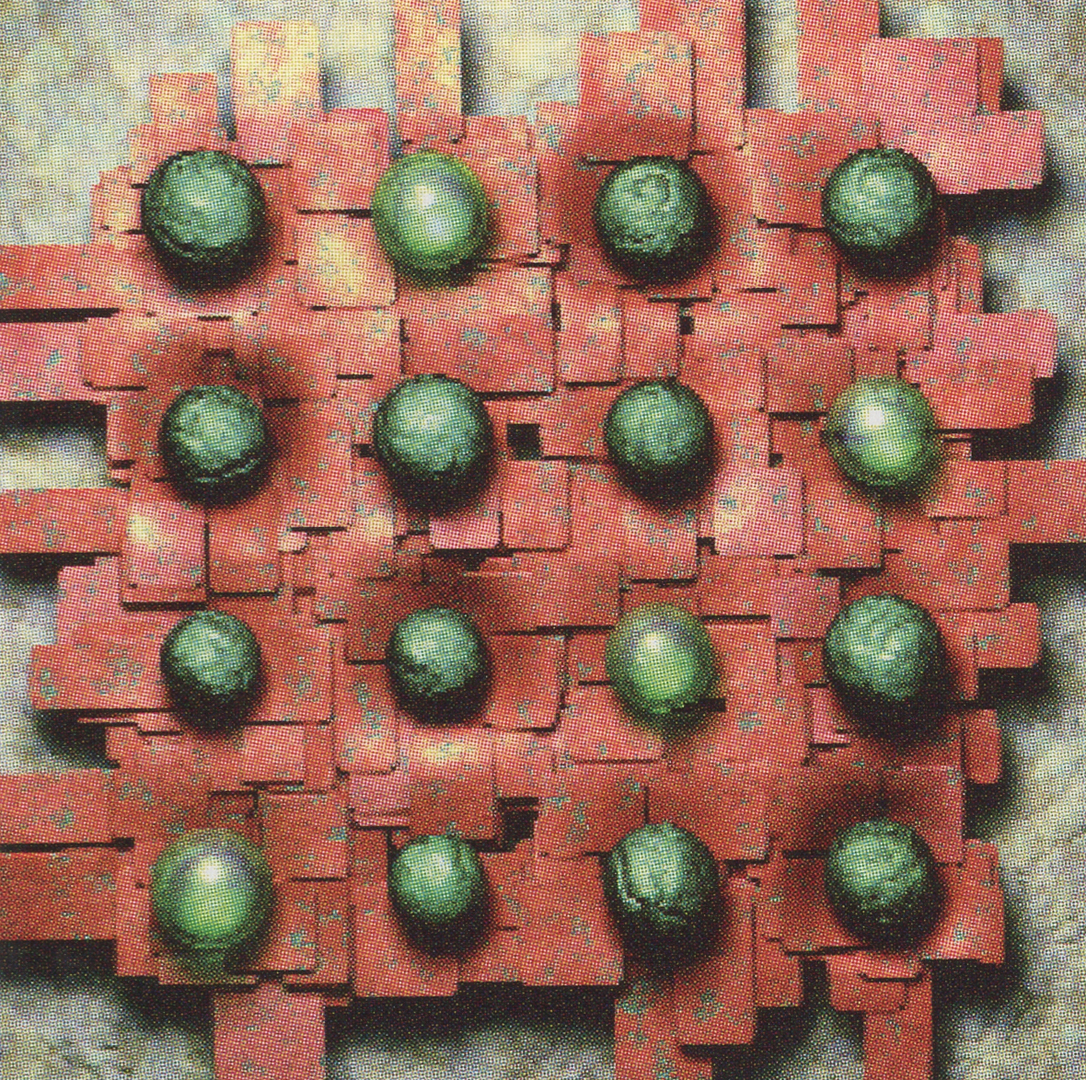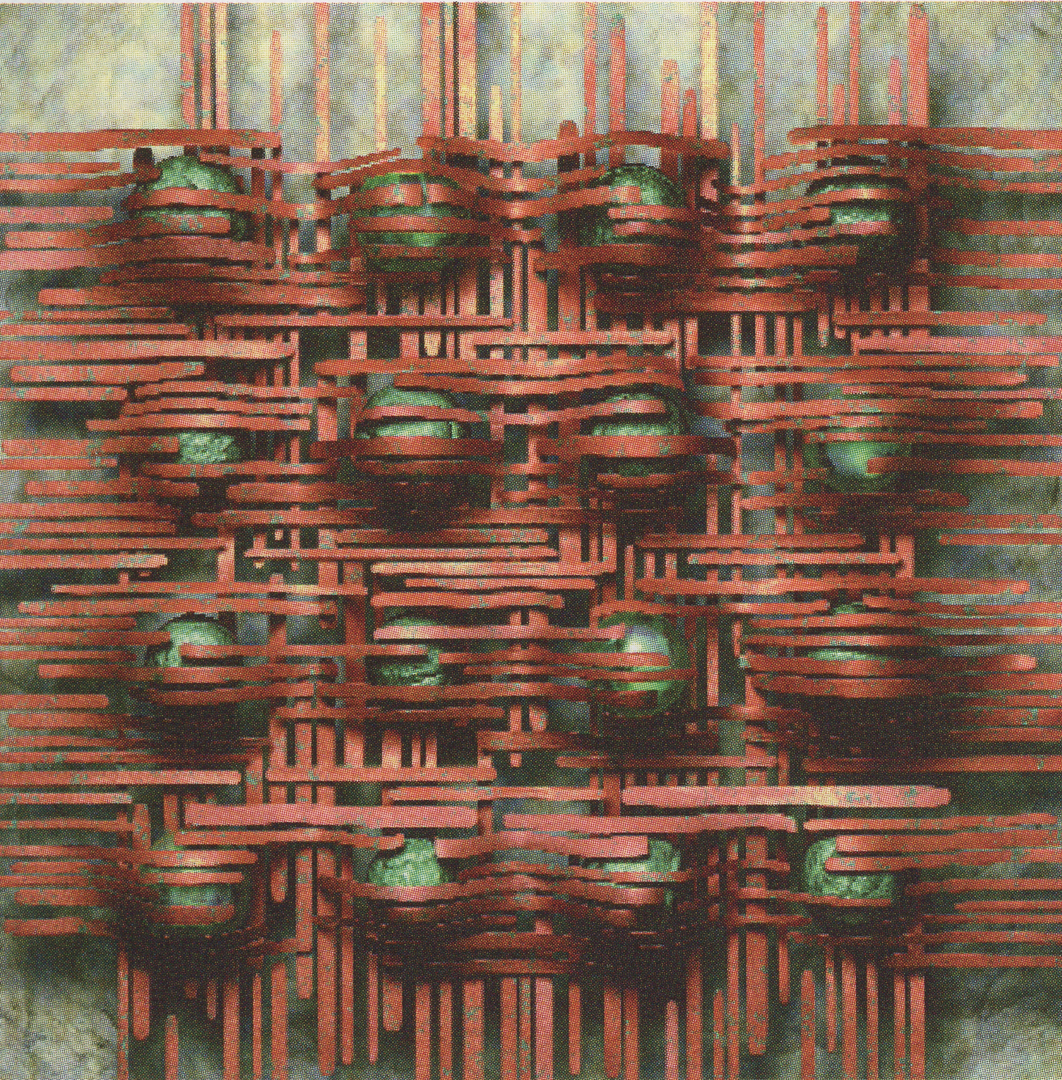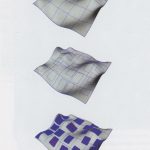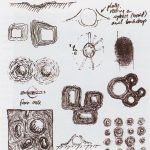Kenneth A. Huff: High resolution 3-dimensional rendering for the 2-dimensional image
Artist(s):
Title:
- High resolution 3-dimensional rendering for the 2-dimensional image
Exhibition:
Creation Year:
- 2002
Medium:
- digital images on photographic paper
Size:
- 34 x 34 inches
Category:
Keywords:
Artist Statement:
The iridescence of a beetle; the twisting surfaces of a wilting leaf; the spiral forms and sutures of a fossilized mollusk shell; fissures growing in drying mud; the arches, loops, and whorls of a fingerprint: all are examples of the natural forms and patterns that inspire my images. While I draw on these natural sources for inspiration, I do not create literal translations of their patterns and forms. I am intrigued with combining ideas from a number of sources and the contrast and ambiguity that arise from those combinations.
Even though I embrace technology in my process, I do not create the mechanical perfection of many human-made patterns made up of perfectly repeating identical elements. More intriguing are patterns found in the natural world in which elements repeat, but not necessarily with perfect symmetry and in which elements are similar, but not necessarily identical. Many of the patterns I create have both periodic and aperiodic aspects.
Inspired by the random, yet structured beauty and minute details of nature (flora, fauna, and mineral), I often include many objects in my images-all similar in form, yet each unique in its details. Those details of color and texture mimic the level of physical detail found in the natural world and create an illusion of reality even as the viewer is confronted with the practical knowledge that the illustrated objects do not exist.
One of the great joys of my process is that I can create an image with physical levels of detail and realism without the constraints of physical materials. The path from inspiration and idea to implementation and image is direct and unencumbered.
I recently met a scientist who investigates the microstructures formed by the controlled sintering of ceramic powders. Sintering involves heating, but not melting, materials to form a coherent mass. Electronmicrographs of his research served as the initial inspiration for a series that incorporates numerous small plates, either entirely representing a surface or coating portions of a surface. The structured placement of the 16 spheres in each image is contrasted with the irregularities of the plates.
Technical Information:
In general terms, the final images of my work are created entirely using digital tools. The images are high-resolution, 3D renderings, typically 6,000 by 6,000 pixels. All of the 3D modeling, texturing, lighting, and rendering is done using Alias I Wavefront Maya running on SGI and Apple Macintosh computers.
There is no photography involved in my process, nor are physical objects or source materials used in the pieces. They are entirely virtual constructions.
The patterns of color and texture on the surfaces within my work are developed almost exclusively using procedural, 3D textures that simulate solid materials. These textures produce unique values over the entire surface while maintaining an overall consistency. By modifying the attributes of these materials or having the attribute values determined by other materials, I build up the complex patterns of color and texture.
The final renderings are always ray-traced. While the rendering may be broken into sections for efficiency, all renderings are completed in a single pass. The only compositing I do involves assembling the sections. I use MEL, Maya’s integrated programming language, extensively to automate repetitive tasks. An example of this would be an image that contains numerous objects, all of which are similar, but each of which is unique in its structural and textural details. I use MEL to create a tool which could produce the multitude of objects while including the variations which make each object unique. Those variations are often based on random values within a specified range.
For the images included in the Art Gallery, I created a tool called “surfacePlater” which, given a 3D surface, will create a number of objects that conform to the contours of the surface. The general characteristics of the objects, such as the width, thickness, and density, are controlled by setting ranges or desired values in a graphical user interface. The exact placement of the objects on the surface is random and done in such a way that the objects do not overlap.
Sketching on paper is a critical first step in my creative process. The sketches may include technical notes and comments on material, color, texture, and lighting. While some sketches are more fully formed and include the general composition of an image, others contain only elements that may be combined with elements from earlier sketches.
Final prints of my images are produced on a Cymbolic Sciences LightJet 5000. The LightJet directly exposes the emulsion of a color photographic print paper using a combination of red, green, and blue laser light. Once exposed, the paper is developed in chemistry just as a photograph would be.
Other Information:
I will be completing new images that will incorporate one or more of the active themes currently flowing through my work. Many of those themes are implemented using software tools I develop specifically for my work. The tool development process often takes place concurrently with the creation of a new image, driven by the specific technical requirements of the image.
The new work will be documented on an interactive kiosk that will display the work in progress, sources of inspiration, original concept sketches, previously created work, and any new images created. All of these will be annotated and connected in an interactive environment highlighting the themes and patterns that flow throughout my body of work.
In addition to completing new work and discussing my overall and specific creative and technical processes, I also will address what it is like to be an independent fine artist using digital tools. Being an independent artist in any medium can be difficult, but doing so in a medium that is generally misunderstood and constantly evolving presents significant additional challenges.
For the background of this image, a number of surfaces were stacked on top of each other and then processed using the “surfacePlater” tool.
Images:
1-2: A surface is covered with test outlines and then final plates are constructed. Attributes such as density of placement, thickness and proportions of width to length are controlled through a graphical user interface.
3: Original concept sketches in pencil.










